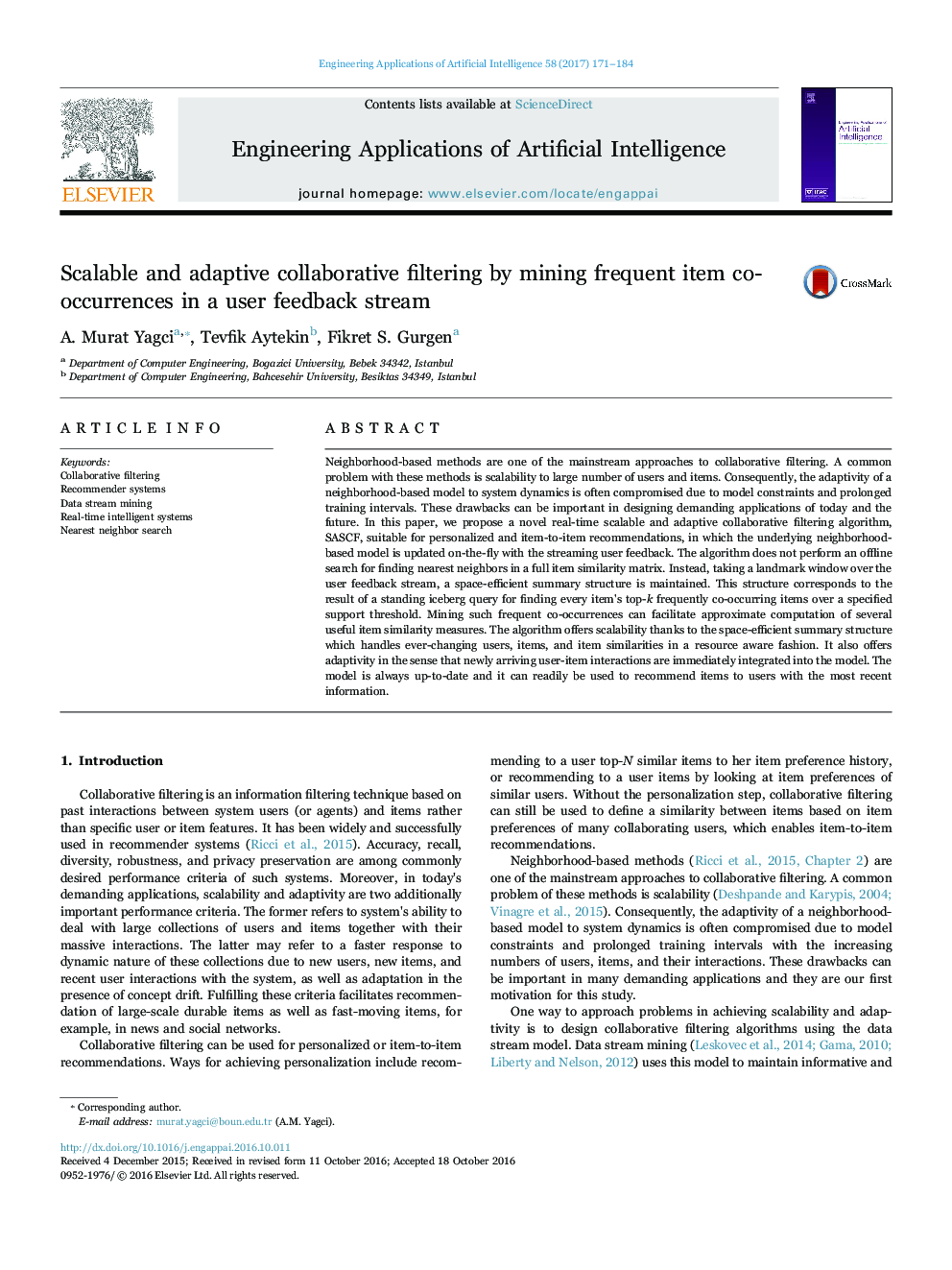| Article ID | Journal | Published Year | Pages | File Type |
|---|---|---|---|---|
| 4942794 | Engineering Applications of Artificial Intelligence | 2017 | 14 Pages |
Abstract
Neighborhood-based methods are one of the mainstream approaches to collaborative filtering. A common problem with these methods is scalability to large number of users and items. Consequently, the adaptivity of a neighborhood-based model to system dynamics is often compromised due to model constraints and prolonged training intervals. These drawbacks can be important in designing demanding applications of today and the future. In this paper, we propose a novel real-time scalable and adaptive collaborative filtering algorithm, SASCF, suitable for personalized and item-to-item recommendations, in which the underlying neighborhood-based model is updated on-the-fly with the streaming user feedback. The algorithm does not perform an offline search for finding nearest neighbors in a full item similarity matrix. Instead, taking a landmark window over the user feedback stream, a space-efficient summary structure is maintained. This structure corresponds to the result of a standing iceberg query for finding every item's top-k frequently co-occurring items over a specified support threshold. Mining such frequent co-occurrences can facilitate approximate computation of several useful item similarity measures. The algorithm offers scalability thanks to the space-efficient summary structure which handles ever-changing users, items, and item similarities in a resource aware fashion. It also offers adaptivity in the sense that newly arriving user-item interactions are immediately integrated into the model. The model is always up-to-date and it can readily be used to recommend items to users with the most recent information.
Related Topics
Physical Sciences and Engineering
Computer Science
Artificial Intelligence
Authors
A. Murat Yagci, Tevfik Aytekin, Fikret S. Gurgen,
